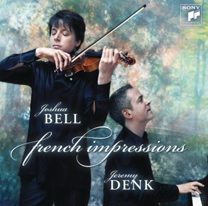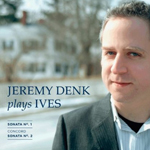The Berg Chamber Concerto ends with four notes, F-G-A-B… I should say, it doesn’t end with those notes, but with their reverberation: a fading memory of those notes, what they used to sound like. The final scattered, scattering, disintegrating events of this piece are in fact directed by the composer to be timed to the pace of that fade; they need to be attuned to that slow vanishing. A series of quick running gestures throw themselves away into that persisting chord; against the very, very slow process of the sounds diminishing in the piano, we hear these ephemeral, ever shorter, fragments; a weird, disturbing disjunction of quick and slow; the slow gesture is, as always, more “powerful;” and so the last fragment “conforms,” does not fight the piano’s stubborn but softening pitches; the violin simply plays the same F-G-A-B, quickly, which we then barely still hear, as if an echo or shadow, in the piano (are we sure we still hear it? do we imagine it?) … an odd gesture, full of uncertainty of perception, for the final moments of a piece.
Those notes, as far as I can tell (and I do anticipate/dread corrective acidic commentary from theorists galore) first truly come to our attention at the beginning of the slow movement. Though I don’t play the slow movement I look at it with longing. I have played through its opening bars hundreds of times just for the pleasure; a mixed, intense pleasure; suffice it to say I often feel the need for a cold shower or cigarette afterwards. It is that good. Yet again Berg proves that the moment when the pianist stops playing is the best. I do not relish being replaced by such beauty.
Again, back to those notes, in proper order G-F-A-B. They emerge, cleverly, as if having been played for some time, out of the chaotic, accelerating waltz of the end of the first movement. There can be “no solution” to the circling and re-circling wildness of the first movement, no solution in that direction anyway; only the violin, entering from a totally different direction, can answer it, can make any progress. The switch of instruments is a metaphor for a different world, a voice “from the wilderness.”
To be technical (bear with me), the four notes the violin plays are separated by whole steps. Then it plays an ascending, sensual gesture of all the remaining eight pitches (only those damned 12 pitches in all of our Western music); a gesture which means anything which is NOT G-F-A-B; then it returns to the “motto” G-F-A-B. It keeps returning to these four, a broken record; this returning is its meaning; it is an answer, a refrain, a cipher. Its “whole-step-ness” (another made-up word which I stand by) is essential, and not just as a technical name, of course, but as a sign. Debussy is of course famous for tearing down the Western tonal structures of meaning with the simple whole-tone scale. Instead of directed dissonances and half-steps, instead of asymmetry and territory, there is the evenly spaced, “unbiased” world of notes all equidistant. It is as if he wanted to wipe the slate clean, to start fresh with sound. How else can you counteract the powerful German narratives, the tonal imperative? In this very German work of Berg, dissonances of course abound; it is a massive architecture of leaning and resolving half-steps; but these four notes G-F-A-B, without half-steps, represent therefore something separate, something uncontaminated by dissonance, resolution, direction. Which it is why it is so powerfully affecting that the violin keeps coming back to them, keeps seeking out the whole-steps, that “blank” sound. That is it for me, the sign: these notes, and I am influenced for sure in this by the fact of their being all “white keys” on the piano keyboard, are a blank, an absence. The piece keeps wanting to retreat, to come away from itself and its contrapuntal, functional madness, to find shelter in this nothing. And so, when you hear these same notes, persisting at the end, as a recurring answer to the little fragments, it is like an existential non-answer to all the piece’s questions, all the more powerful for the fact that the pianist need not replay the notes but simply let them resound, with the pedal (the piano stands by its earlier statement, nothing, no matter what you have to say about it). I don’t know whether to take comfort or not…
I’m reminded of these lines of Montale (trans. Jeremy Reed):
Then obliterate if you wish
the errors of a life,
as a sponge erases
the chalk marks on a blackboard.
I need to re-enter your circle,
find help in my fragmentation.



3 Comments
I am an admirer of your blog and I find your analyses of music entrancing. I am also an editor for Top Ten Sources (www.toptensources.com), and I’ve chosen your blog to be one of our top ten sources on Classical Music, located at http://classical-music.toptensources.com/TopTenSources/Default.aspx. Congratulations!
I’d like to send you a .gif to indicate this, as well as give you the option to opt out, if you so desire. However, I couldn’t seem to find your email on your blog to do so, so perhaps you’d like to email me? My email is mac at toptensources.com.
Thank you for writing such an enlightening and enlivening blog – keep up the good work!
Ooh, Jeremy’s on Top Ten Sources! Congrats!
A note of caution. Avoid Berg if constipated. Things will get worse.